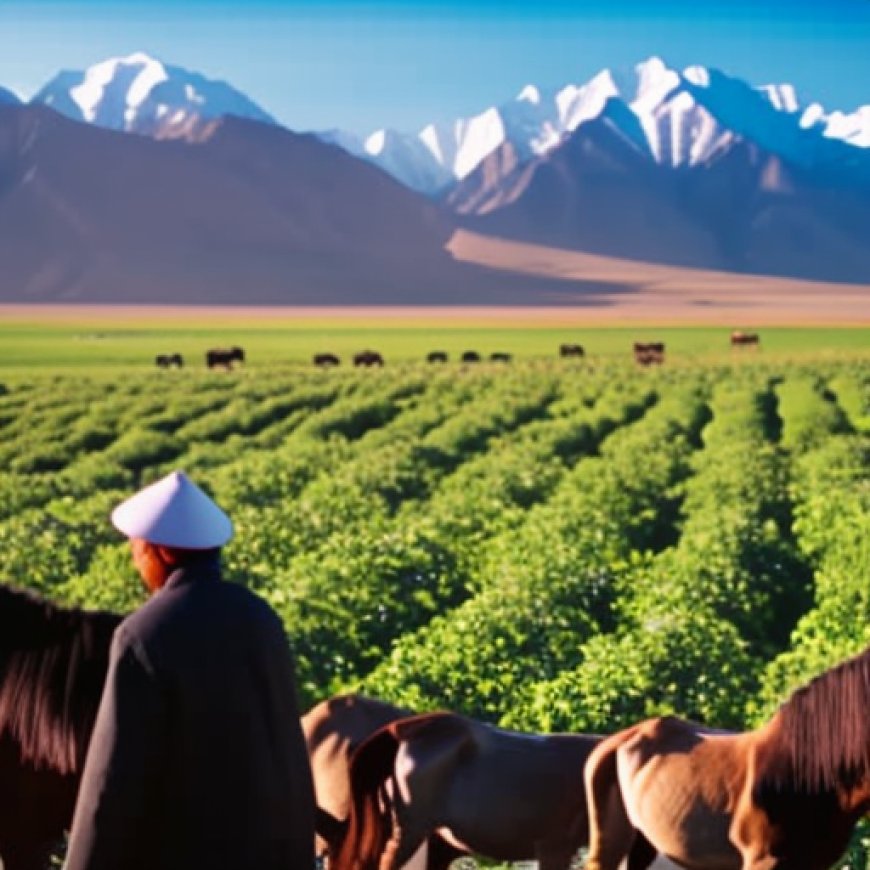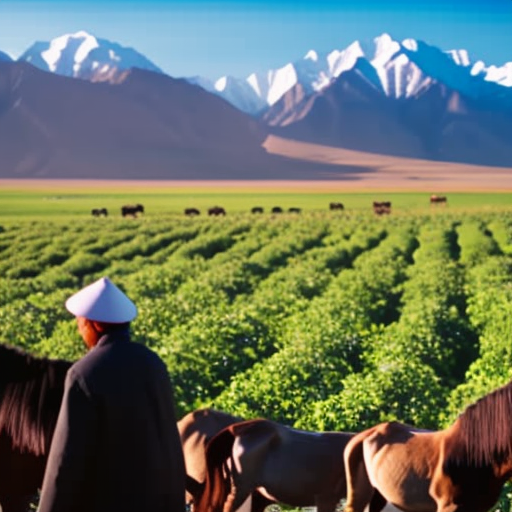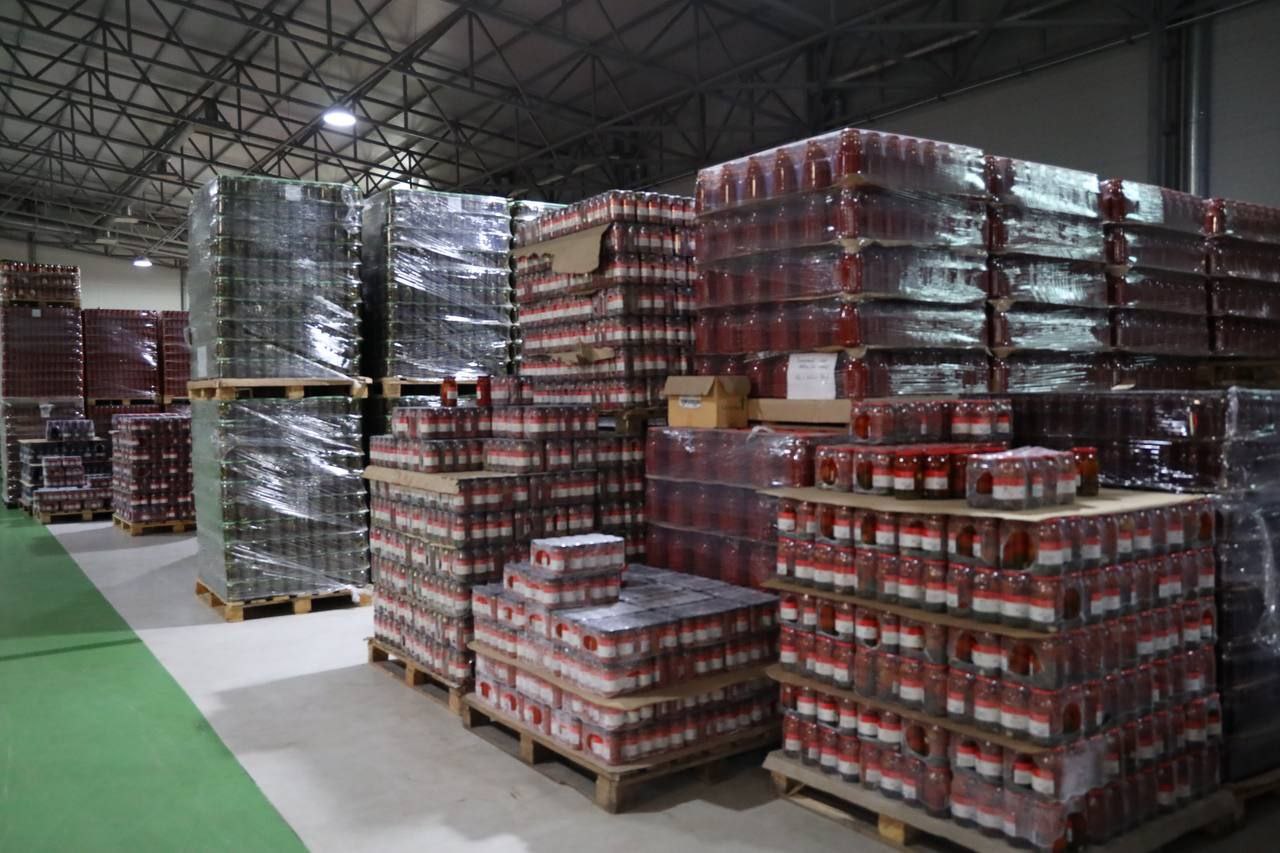Kyrgyz Farmers Urged to Supply Agricultural Products to China – The Times Of Central Asia
Kyrgyz Farmers Urged to Supply Agricultural Products to China Times of Central Asia


The Kyrgyz Ministry of Agriculture Encourages Trade with China

The Kyrgyz Ministry of Agriculture, Forestry and Water Resources is urging domestic businesses to establish and expand trade in agricultural produce with the People’s Republic of China (PRC).
Increasing Food Exports to China
Kyrgyz farmers and processors currently export wheat flour, cherries, melons, grapes, and soybeans to China. In order to further increase food exports, the ministry has issued a series of guidelines. These guidelines require entrepreneurs and small-business owners to:
- Be registered on the website of the General Customs Administration of the PRC.
- Ensure that their produce is free from genetically modified organisms (GMOs) and harmful additives to meet Chinese demand.
The Kyrgyz Ministry of Agriculture emphasizes that the requirements on the Chinese side differ depending on the risks posed by individual plant products. Therefore, first-time exporters are subject to a comprehensive inspection of their produce.
China’s Need for Organic Agriculture Imports
Chinese Ambassador to Kyrgyzstan, Du Dewen, confirmed China’s need for imports from organic agriculture vendors during a conference in Bishkek. China also plans to improve trade relations with Kyrgyzstan.
Trade Turnover and Export Requirements
According to the General Customs Administration, Kyrgyzstan has increased its annual export to China by over two-fold in the first quarter of 2024. The total bilateral trade turnover between the two countries currently stands at $4.5 billion per year.
In a recent list provided by Chinese authorities, Beijing requires the import of beef, poultry, fish, as well as cowhides, sheep, goats, and washed wool and cashmere.
SDGs, Targets, and Indicators
| SDGs | Targets | Indicators |
|---|---|---|
| SDG 2: Zero Hunger | 2.3: By 2030, double the agricultural productivity and incomes of small-scale food producers, in particular women, indigenous peoples, family farmers, pastoralists, and fishers, including through secure and equal access to land, other productive resources and inputs, knowledge, financial services, markets, and opportunities for value addition and non-farm employment. | – Increase in the export of agricultural produce from Kyrgyzstan to China – Increase in trade turnover between Kyrgyzstan and China |
| SDG 12: Responsible Consumption and Production | 12.2: By 2030, achieve the sustainable management and efficient use of natural resources. | – Requirement for Kyrgyz producers to ensure their produce is devoid of genetically modified organisms (GMOs) and harmful additives |
| SDG 17: Partnerships for the Goals | 17.11: Significantly increase the exports of developing countries, in particular with a view to doubling the least developed countries’ share of global exports by 2020. | – Increase in the annual export of Kyrgyzstan to China |
1. Which SDGs are addressed or connected to the issues highlighted in the article?
SDG 2: Zero Hunger
The article discusses the Kyrgyz Ministry of Agriculture urging domestic businesses to establish and expand trade in agricultural produce with China. This aligns with SDG 2, which aims to end hunger, achieve food security, improve nutrition, and promote sustainable agriculture.
SDG 12: Responsible Consumption and Production
The article mentions the requirement for Kyrgyz producers to ensure their produce is devoid of genetically modified organisms (GMOs) and harmful additives. This relates to SDG 12, which focuses on responsible consumption and production patterns.
SDG 17: Partnerships for the Goals
The article highlights the increase in bilateral trade turnover between Kyrgyzstan and China. This is relevant to SDG 17, which emphasizes the importance of partnerships and international cooperation to achieve the Sustainable Development Goals.
2. What specific targets under those SDGs can be identified based on the article’s content?
– SDG 2.3: By 2030, double the agricultural productivity and incomes of small-scale food producers, in particular women, indigenous peoples, family farmers, pastoralists, and fishers, including through secure and equal access to land, other productive resources and inputs, knowledge, financial services, markets, and opportunities for value addition and non-farm employment.
– SDG 12.2: By 2030, achieve the sustainable management and efficient use of natural resources.
– SDG 17.11: Significantly increase the exports of developing countries, in particular with a view to doubling the least developed countries’ share of global exports by 2020.
3. Are there any indicators mentioned or implied in the article that can be used to measure progress towards the identified targets?
– Increase in the export of agricultural produce from Kyrgyzstan to China.
– Increase in trade turnover between Kyrgyzstan and China.
– Requirement for Kyrgyz producers to ensure their produce is devoid of genetically modified organisms (GMOs) and harmful additives.
These indicators can be used to measure progress towards the identified targets. An increase in exports and trade turnover would indicate progress towards SDG 2.3 and SDG 17.11, while the requirement for produce devoid of GMOs and harmful additives aligns with SDG 12.2.
4. SDGs, Targets, and Indicators
| SDGs | Targets | Indicators |
|---|---|---|
| SDG 2: Zero Hunger | 2.3: By 2030, double the agricultural productivity and incomes of small-scale food producers, in particular women, indigenous peoples, family farmers, pastoralists, and fishers, including through secure and equal access to land, other productive resources and inputs, knowledge, financial services, markets, and opportunities for value addition and non-farm employment. | – Increase in the export of agricultural produce from Kyrgyzstan to China – Increase in trade turnover between Kyrgyzstan and China |
| SDG 12: Responsible Consumption and Production | 12.2: By 2030, achieve the sustainable management and efficient use of natural resources. | – Requirement for Kyrgyz producers to ensure their produce is devoid of genetically modified organisms (GMOs) and harmful additives |
| SDG 17: Partnerships for the Goals | 17.11: Significantly increase the exports of developing countries, in particular with a view to doubling the least developed countries’ share of global exports by 2020. | – Increase in the annual export of Kyrgyzstan to China |
Behold! This splendid article springs forth from the wellspring of knowledge, shaped by a wondrous proprietary AI technology that delved into a vast ocean of data, illuminating the path towards the Sustainable Development Goals. Remember that all rights are reserved by SDG Investors LLC, empowering us to champion progress together.
Source: timesca.com

Join us, as fellow seekers of change, on a transformative journey at https://sdgtalks.ai/welcome, where you can become a member and actively contribute to shaping a brighter future.







